Design Process for a Birthing Bed, Based on User Hierarchy: Promoting Improvement in User Satisfaction
Abstract
:1. Introduction
1.1. Design Process
1.2. Birthing Bed
1.3. Project Description
2. Materials and Methods
- Stage A—Traditional Design Process
- Stage B—Hierarchal Design Process
- Stage C—Comparison of Levels of Acceptability of the Proposals
2.1. Stage A: Traditional Design Process
- (a)
- Dynamics of creativity, in which they generated concepts from different sources of inspiration. Each team developed ten design proposals.
- (b)
- Article research, in which they were asked to investigate databases of scientific texts to add information from previous results and to improve their previous proposals. We selected three proposals per team.
- (c)
- Field research, in which five teams selected for their performance in the previous activities by identifying the number of users around the birthing bed, the equipment inside the room, times and movements, the movement hierarchy, and the birthing bed’s functions. Participants generated three proposals per team after taking this information into account.
2.2. Stage B: Hierarchy Design Process
2.3. Comparison of Acceptable Levels of the Proposals
3. Results
3.1. Results Stage A
3.1.1. Step 1: Dynamics of Creativity
3.1.2. Step 2: Article Research
3.1.3. Step 3: Field Research
3.2. Results Stage B
3.2.1. Future Scenarios
3.2.2. Analysis
3.3. Stage C
3.3.1. Analysis
3.3.2. Conclusion Stage C:
4. Discussion
5. Conclusions
6. Patent
7. Ethical Considerations
Author Contributions
Funding
Institutional Review Board Statement
Informed Consent Statement
Data Availability Statement
Acknowledgments
Conflicts of Interest
Sample Availability
References
- Ziebland, S.; Coulter, A.; Calabrese, J.D.; Locock, L.; Oxford University. Understanding and Using Health Experiences: Improving Patient Care, 1st ed.; Oxford University: Oxford, UK, 2013. [Google Scholar]
- Fearis, P.J.; Craft, B. Sustaining the success of medical device innovation. Surgery 2016, 160, 1130–1134. [Google Scholar] [CrossRef]
- Cormican, K.; O’Sullivan, D. Auditing best practice for effective product innovation management. Technovation 2004, 24, 819–829. [Google Scholar] [CrossRef]
- King, P.H.; Fries, R.C.; Johnson, A.T. Design of Biomedical Devices and Systems, 3rd ed.; CRC Press: Boca Raton, FL, USA, 2018. [Google Scholar]
- Weinger, M.B.; Wiklund, M.E.; Gardner-Bonneau, D.J. (Eds.) Handbook of Human Factors in Medical Device Design; CRC Press: Washington, DC, USA, 2011. [Google Scholar]
- Ward, J.R.; Clarkson, P.J. An analysis of medical device-related errors: Prevalence and possible solutions. J. Med. Eng. Technol. 2004, 28, 2–21. [Google Scholar] [CrossRef] [PubMed]
- Buchanan, R. Design research and the new learning. Des. Issues 2001, 17, 3–23. [Google Scholar] [CrossRef]
- Privitera, M.B.; Evans, M.; Southee, D. Human factors in the design of medical devices—Approaches to meeting international standards in the European Union and USA. Appl. Ergon. 2017, 59, 251–263. [Google Scholar] [CrossRef] [PubMed] [Green Version]
- Jing, L.; Jiang, S.; Li, J.; Peng, X.; Ma, J. Advanced Engineering Informatics A cooperative game theory based user-centered medical device design decision approach under uncertainty. Adv. Eng. Inform. 2021, 47, 101204. [Google Scholar] [CrossRef]
- Wilkinson, C.R.; De Angeli, A. Applying user centred and participatory design approaches to commercial product development. Des. Stud. 2014, 35, 614–631. [Google Scholar] [CrossRef]
- Hagedorn, T.J.; Krishnamurty, S.; Grosse, I.R. An information model to support user-centered design of medical devices. J. Biomed. Inform. 2016, 62, 181–194. [Google Scholar] [CrossRef]
- Nordin, V.J. The voice of the customer. For. Chron. 2002, 78, 343–345. [Google Scholar]
- Ulrich Karl, T.E.S.D. Diseño y Desarrollo de Productos, 5th ed.; Mc Graw Hill: Mexico City, Mexico, 2013; ISBN 978-607-15-0944-4. [Google Scholar]
- Stanton, N.A. Hierarchical task analysis: Developments, applications, and extensions. Appl. Ergon. 2006, 37, 55–79. [Google Scholar] [CrossRef] [Green Version]
- Phipps, D.L.; Meakin, G.H.; Beatty, P.C.W. Extending hierarchical task analysis to identify cognitive demands and information design requirements. Appl. Ergon. 2011, 42, 741–748. [Google Scholar] [CrossRef]
- Ogrodnik Peter, J. Medical Device Design, 1st ed.; Academic Press, Ed.; Elsevier: London, UK, 2013. [Google Scholar]
- Ku, B.; Lupton, E. Health Design Thinking: Creating Products and Services for Better Health; Hewitt, C., Ed.; MIT Press: Cambridge, MA, USA, 2020. [Google Scholar]
- Miclăuş, T.; Valla, V.; Koukoura, A.; Nielsen, A.A.; Dahlerup, B.; Tsianos, G.; Vassiliadis, E. Impact of Design on Medical Device Safety. Ther. Innov. Regul. Sci. 2019, 54, 839–849. [Google Scholar] [CrossRef]
- Shah, S.G.S.; Robinson, I.; Ghulam, S.; Shah, S.G.S.; Robinson, I.; Shah, S.G.S.; Robinson, I.; Robinson, I. Benefits of and barriers to involving users in medical device technology development and evaluation. Int. J. Technol. Assess. Health Care 2007, 23, 131–137. [Google Scholar] [CrossRef]
- Rodríguez Morales, L. Diseño Centrado en el Usuario: Métodos e interacciones; Editorial Designio Secretaria de salud, Centro Naional de excelencia Tecnologica en salud: Mexico City, Mexico, 2005; pp. 9–27. [Google Scholar]
- Vredenburg, K.; Isensee, S.; Righi, C. User-Centered Design: An Integrated Approach with Cdrom; Prentice Hall PTR: Upper Saddle River, NJ, USA, 2001; ISBN ISBN 0-13-091295-6. [Google Scholar]
- Luna, D.R.; Rizzato Lede, D.A.; Otero, C.M.; Risk, M.R.; González Bernaldo de Quirós, F. User-centered design improves the usability of drug-drug interaction alerts: Experimental comparison of interfaces. J. Biomed. Inform. 2017, 66, 204–213. [Google Scholar] [CrossRef] [PubMed]
- Martin, J.L.; Murphy, E.; Crowe, J.A.; Norris, B.J. Capturing user requirements in medical device development: The role of ergonomics. Physiol. Meas. 2006, 27, R49. [Google Scholar] [CrossRef] [PubMed]
- Jarow, J.P.; Baxley, J.H. Medical devices: US medical device regulation. Urol. Oncol. Semin. Orig. Investig. 2015, 33, 128–132. [Google Scholar] [CrossRef]
- Bitkina, O.V.; Kim, H.K.; Park, J. Usability and user experience of medical devices: An overview of the current state, analysis methodologies, and future challenges. Int. J. Ind. Ergon. 2020, 76, 102932. [Google Scholar] [CrossRef]
- Maguire, M. Methods to support human-centred design. Int. J. Hum. Comput. Stud. 2001, 55, 587–634. [Google Scholar] [CrossRef]
- Bitterman, N. Design of medical devices-A home perspective. Eur. J. Intern. Med. 2011, 22, 39–42. [Google Scholar] [CrossRef] [PubMed]
- Lang, A.R.; Martin, J.L.; Sharples, S.; Crowe, J.A. The effect of design on the usability and real world effectiveness of medical devices: A case study with adolescent users. Appl. Ergon. 2013, 44, 799–810. [Google Scholar] [CrossRef] [PubMed]
- Trujillo Suárez, M.; Aguilar, J.J.; Neira, C. Los métodos más característicos del diseño centrado en el usuario -DCU-, adaptados para el desarrollo de productos materiales. Iconofacto 2016, 12, 215–236. [Google Scholar] [CrossRef] [Green Version]
- Wiggermann, N.; Rempel, K.; Zerhusen, R.M.; Pelo, T.; Mann, N. Human-Centered Design Process for a Hospital Bed: Promoting Patient Safety and Ease of Use. Ergon. Des. 2019, 27, 4–12. [Google Scholar] [CrossRef] [Green Version]
- Ghulam, S.; Shah, S.; Robinson, I. Medical device technologies: Who is the user? Int. J. Healthc. Technol. Manag. 2008, 9, 181–197. [Google Scholar]
- Goldkuhl, L.; Dellenborg, L.; Berg, M.; Wijk, H.; Nilsson, C. The influence and meaning of the birth environment for nulliparous women at a hospital-based labour ward in Sweden: An ethnographic study. Women Birth 2021, 9–10. [Google Scholar] [CrossRef]
- Jenkinson, B.; Josey, N.; Kruske, S. BirthSpace: An evidence-based guide to birth environment design. Queensl. Cent. Mothers Babies Univ. Queensl. 2014, 1–25. [Google Scholar] [CrossRef]
- Townsend, B.; Fenwick, J.; Thomson, V.; Foureur, M. The birth bed: A qualitative study on the views of midwives regarding the use of the bed in the birth space. Women Birth 2016, 29, 80–84. [Google Scholar] [CrossRef]
- Bowden, C.; Honours, B.; Sheehan, A.; Foureur, M. Birth room images: What they tell us about childbirth. A discourse analysis of birth rooms in developed countries. Midwifery 2016, 35, 71–77. [Google Scholar] [CrossRef]
- Gilman, B.L.; Brewer, J.E.; Kroll, M.W. Medical Device Design Process. In Proceedings of the 2009 Annual International Conference of the IEEE Engineering in Medicine and Biology Society, Minneapolis, MN, USA, 3–6 September 2009. [Google Scholar]
- Rodriguez-Calero, I.B.; Coulentianos, M.J.; Daly, S.R.; Burridge, J.; Sienko, K.H. Prototyping strategies for stakeholder engagement during front-end design: Design practitioners’ approaches in the medical device industry. Des. Stud. 2020, 71, 100977. [Google Scholar] [CrossRef]
- Röhmel, J. The permutation distribution of the Friedman test. Comput. Stat. Data Anal. 1997, 26, 83–99. [Google Scholar] [CrossRef]
- Cortes-Chavez, F.; Diaz-Pinal, A.; Rossa-Sierra, A.; Garnier, C.; Gonzalez-Muñoz, E.L. Hierarchy of the users around the birthing bed, analysis for furniture redesign. Adv. Intell. Syst. Comput. 2020, 1203, 356–361. [Google Scholar]
- Cortes-Chavez, F.; Rossa-Sierra, A.; Gonzalez-Muñoz, E.L.; Aceves-Gonzalez, C.; Manzano-Hernandez, P.; Giovanna-Trotta, M. Multi-frameworks development for the medical device design process as a critical factor for innovation. Adv. Intell. Syst. Comput. 2020, 957, 227–234. [Google Scholar]
- Eilouti, B. Scenario-based design: New applications in metamorphic architecture. Front. Archit. Res. 2018, 7, 530–543. [Google Scholar] [CrossRef]
- Cortes-Chavez, F.; Giovanna-Trotta, M.; Manzano-Hernandez, P.; Rossa-Sierra, A.; Duran-Aguilar, G. Medical Device Design Challenges Based on Users Hierarchy and Their Correlation with Illness. In International Conference on Human Systems Engineering and Design: Future Trends and Applications; Springer: Cham, Switzerland, 2018; pp. 198–203. ISBN ISBN 9783030020521. [Google Scholar]
- Clarkson, D.M. Medical Device Guidebook: A browser information resource for medical device users. Med. Eng. Phys. 2017, 41, 97–102. [Google Scholar] [CrossRef]
- Vincent, C.J.; Li, Y.; Blandford, A. Integration of human factors and ergonomics during medical device design and development: It’s all about communication. Appl. Ergon. 2014, 45, 413–419. [Google Scholar] [CrossRef]
- Chun, S.; Nam, K. User-Centred Design Approaches for Planning Inpatient Room of Geriatric Long-Term Care Hospitals: Design Factors with Practical Suggestions. Des. J. 2019, 22, 413. [Google Scholar] [CrossRef]
- Bátiz-Flores, T.; Perez, A.; Martínez-López, M.F.; Cortes-Chavez, F.; Garnier-Ortiz, C.R. Birthing Bed with Ergonomic Design of Adjustable Sections by Touch Technology that Facilitates Its Understanding and Use. Adv. Intell. Syst. Comput. 2021, 1269, 174–179. [Google Scholar]


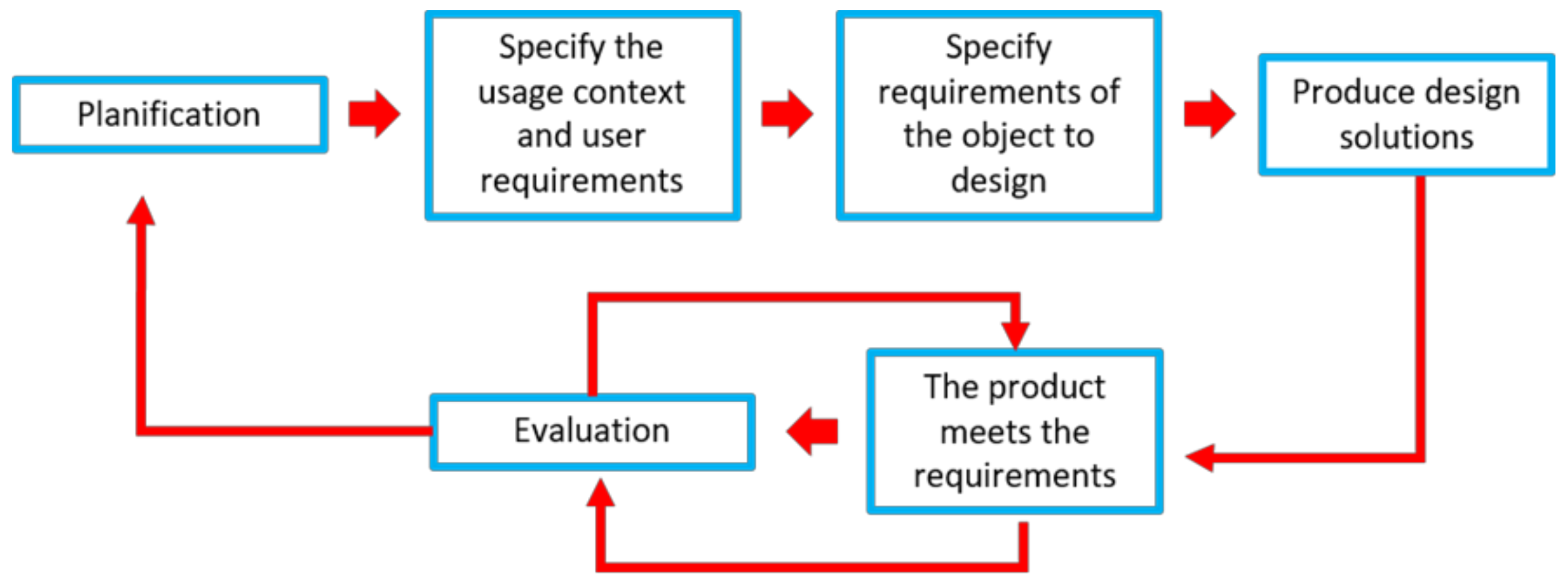
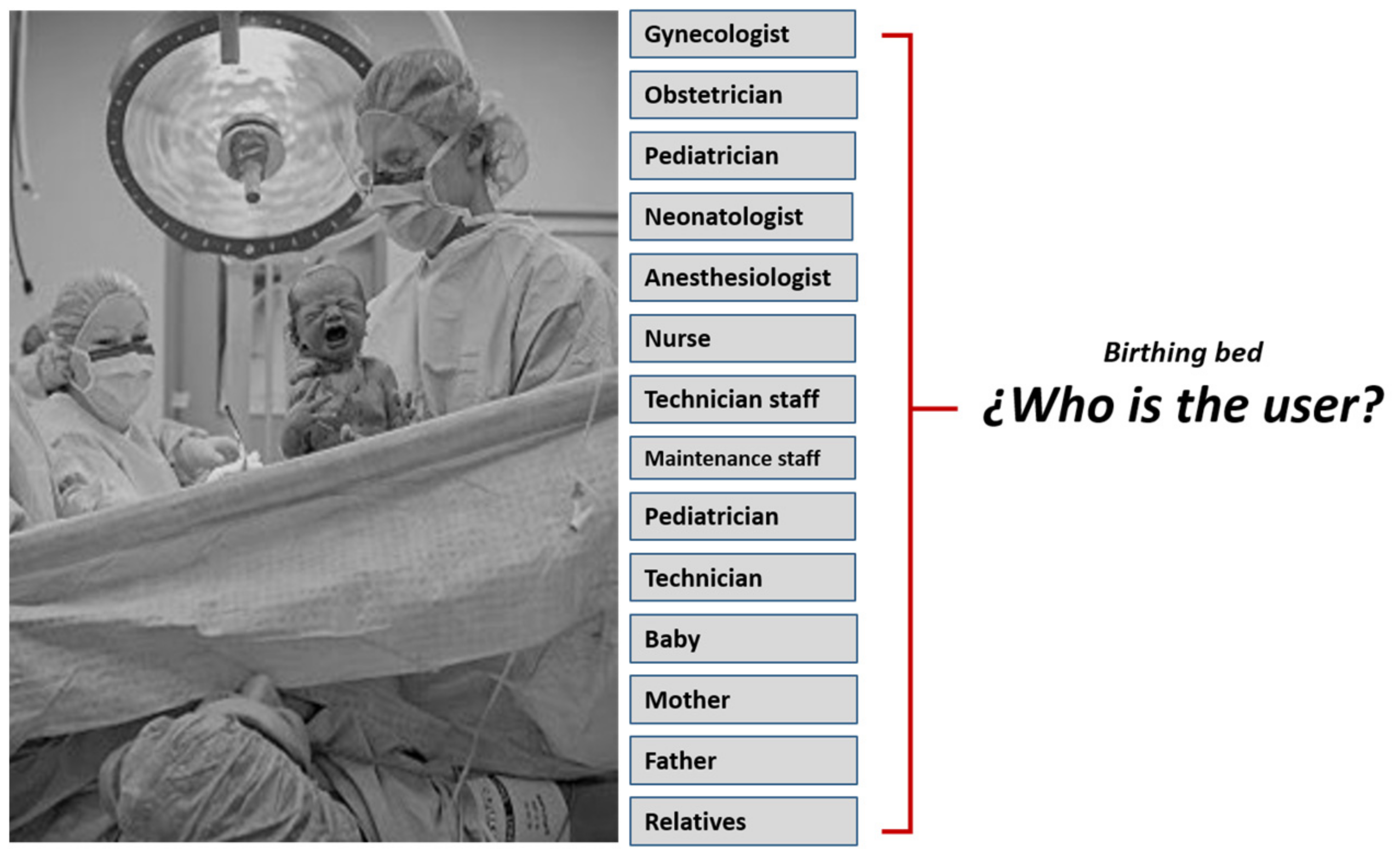

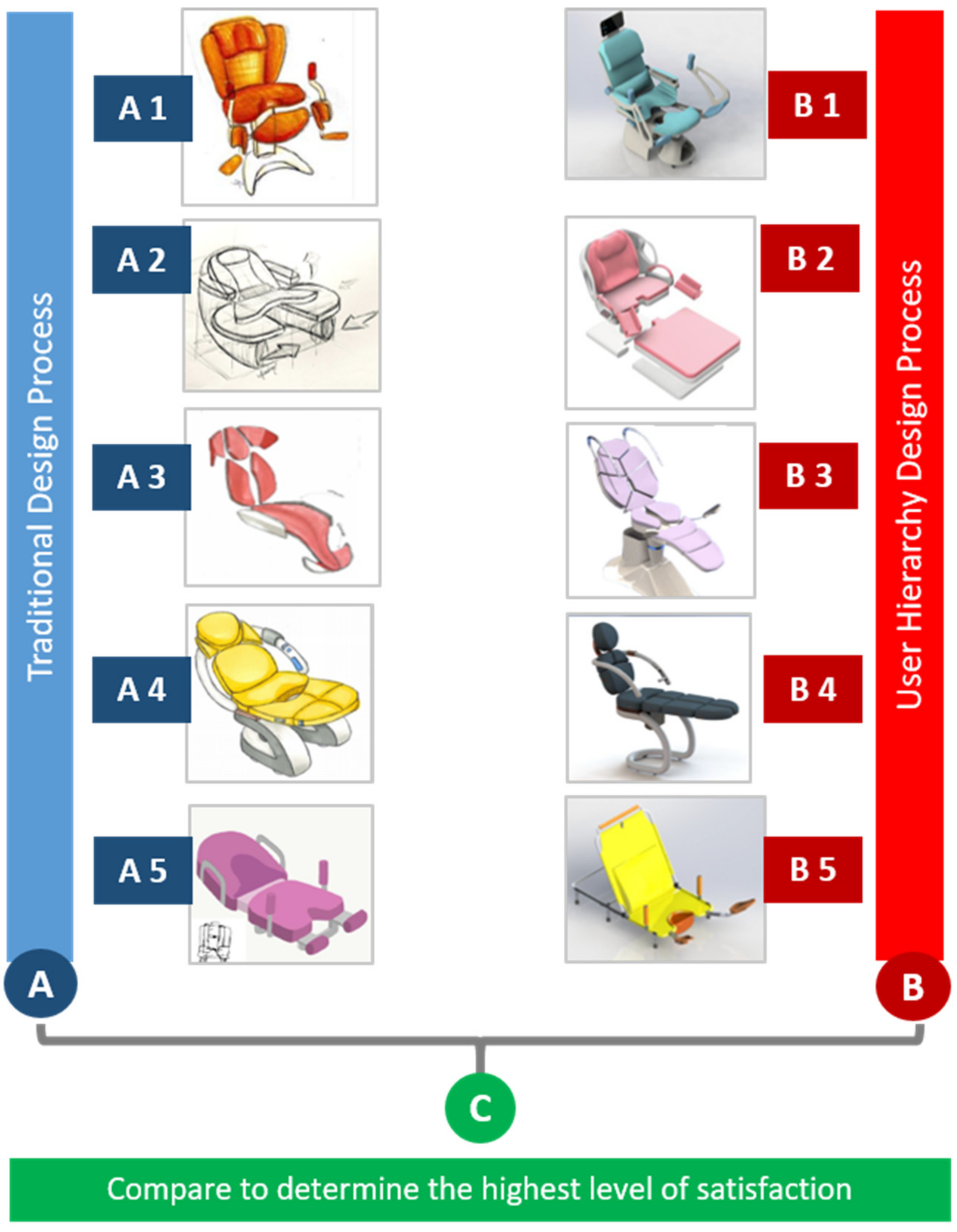
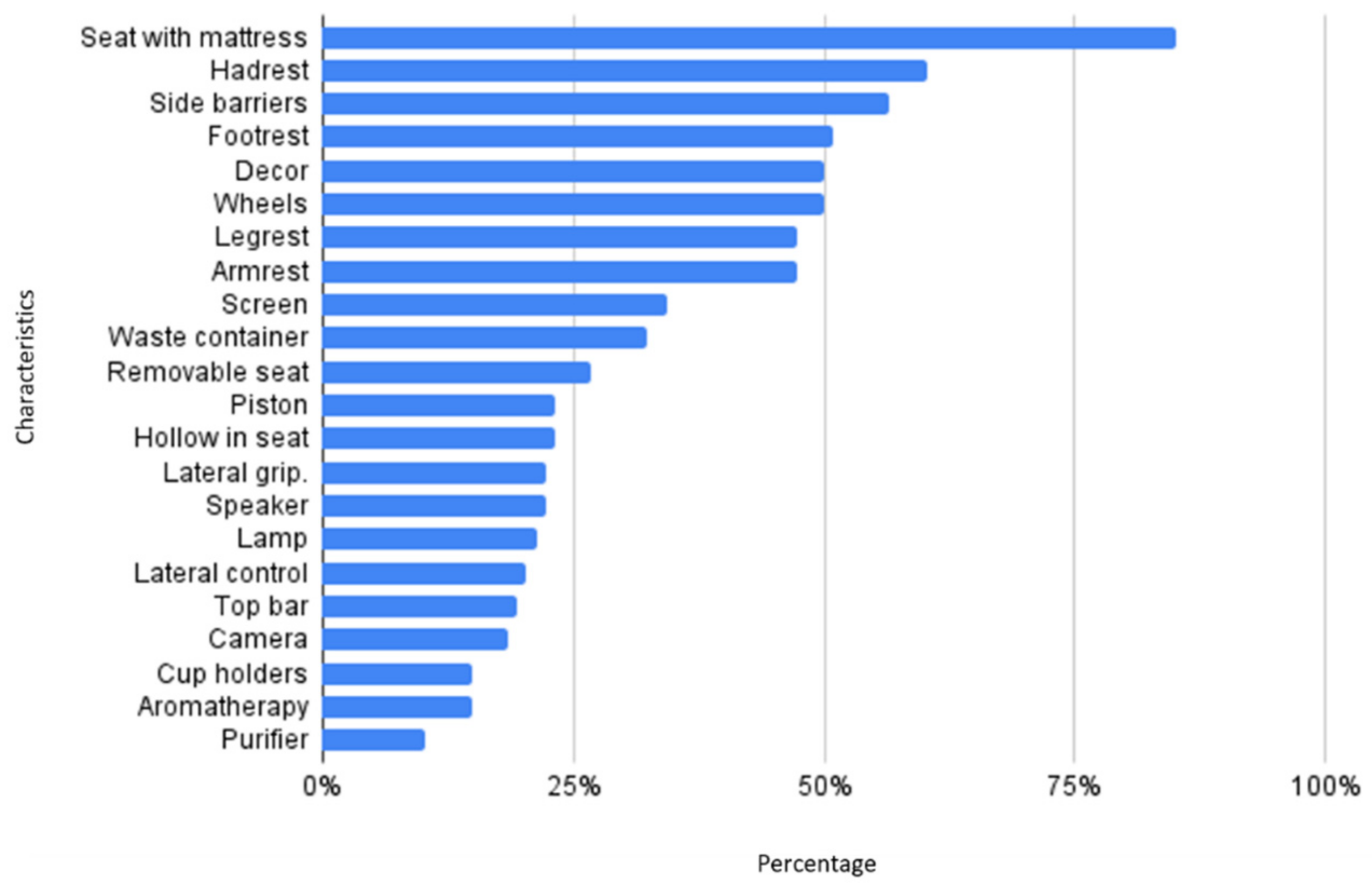
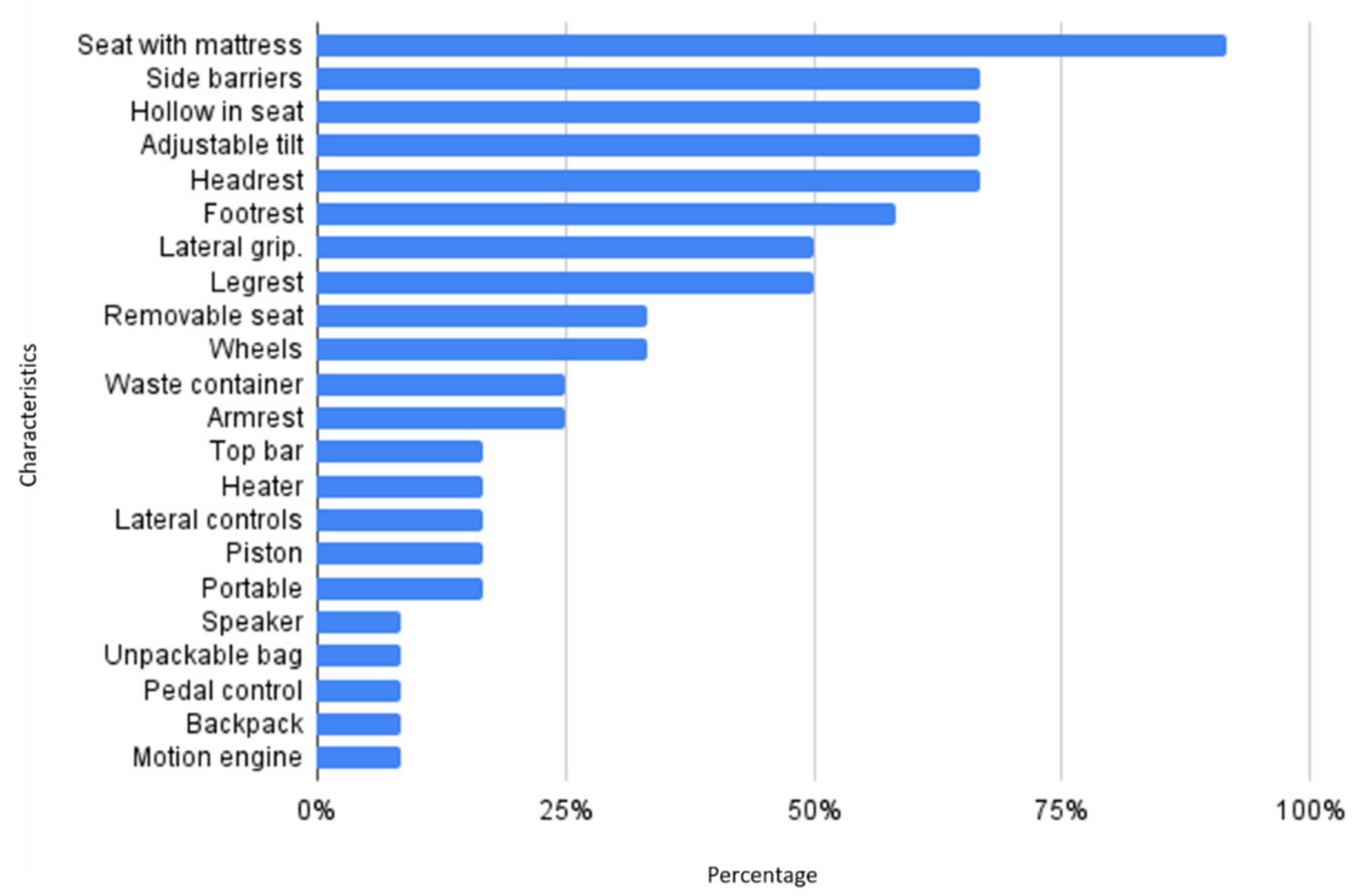
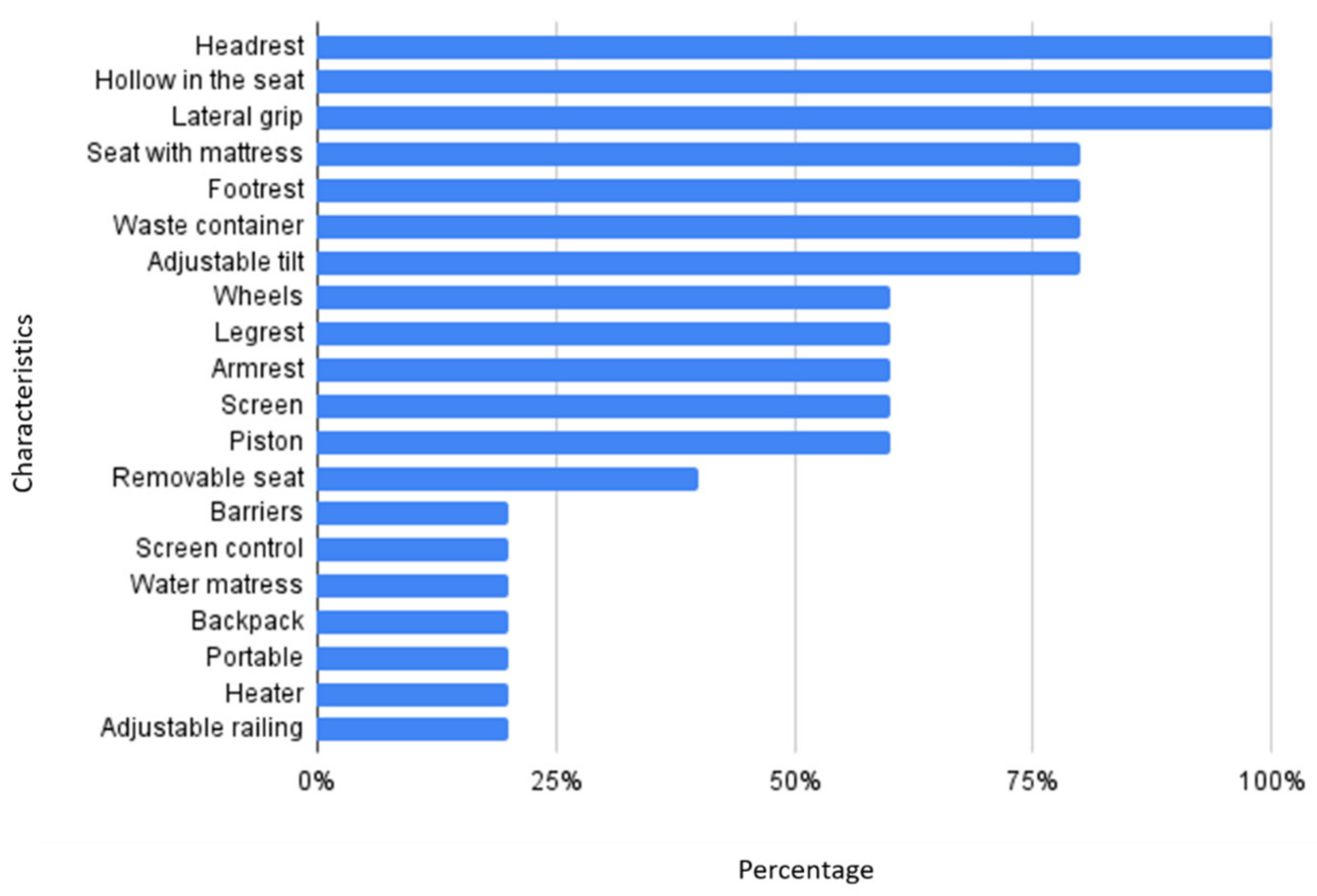



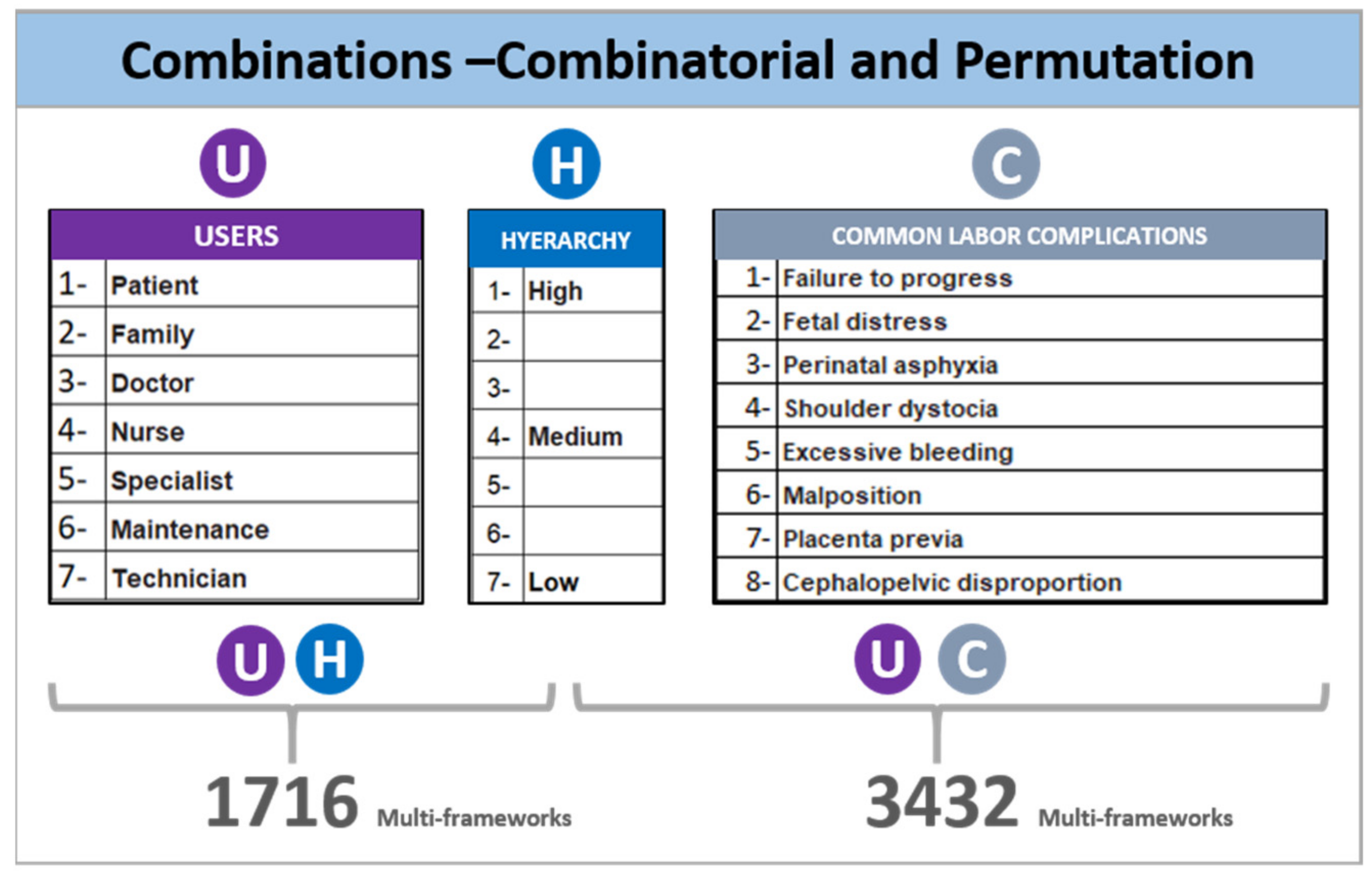
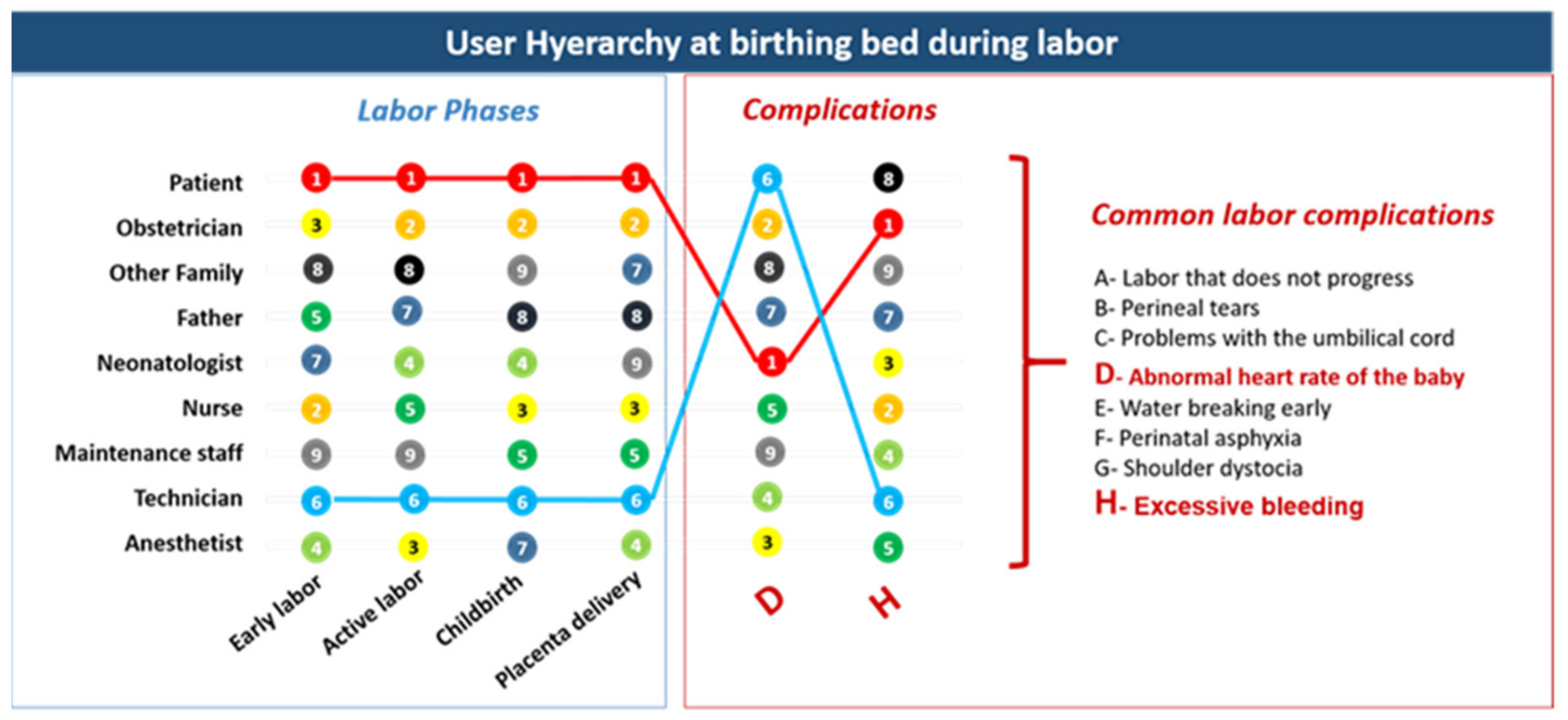

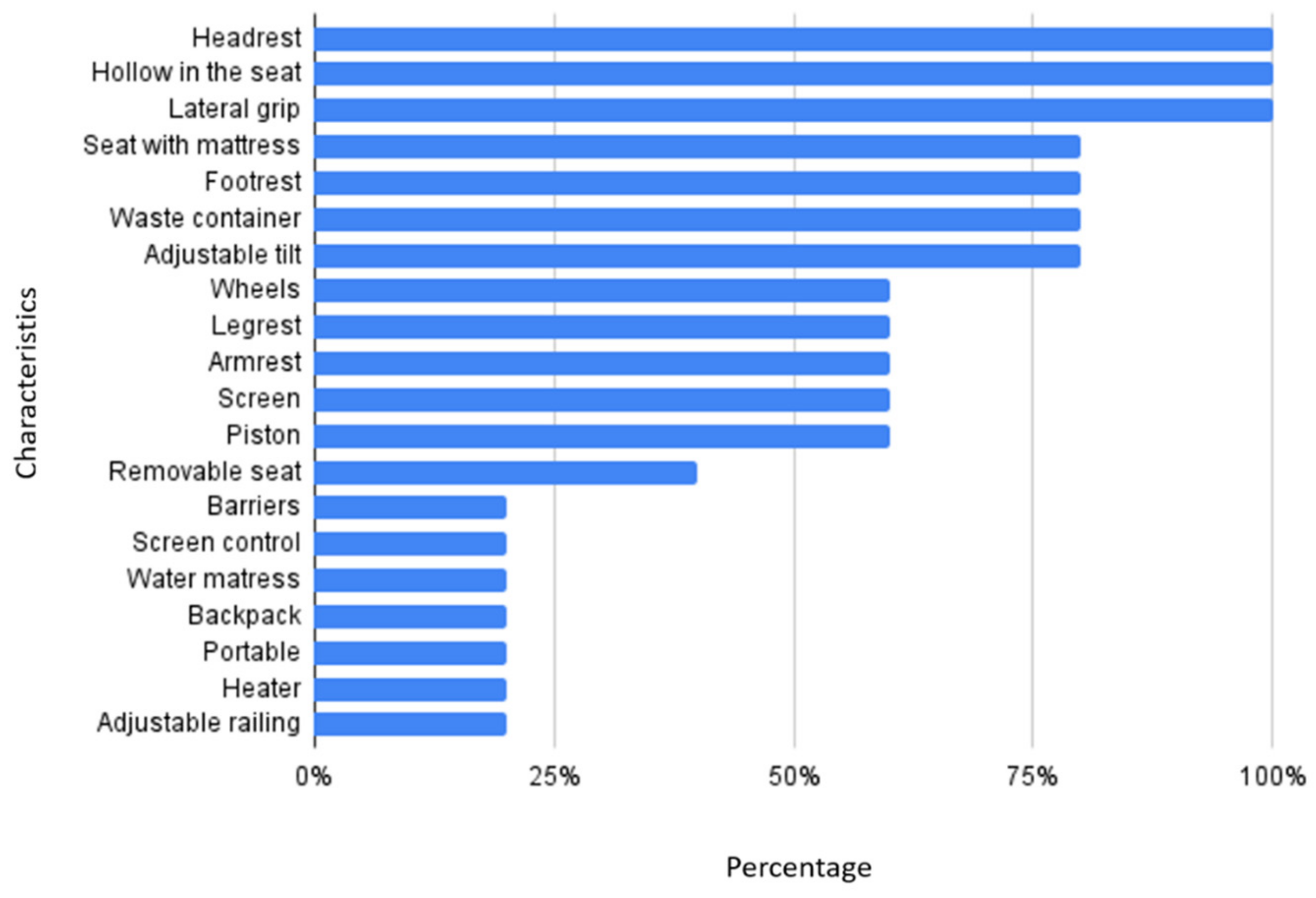
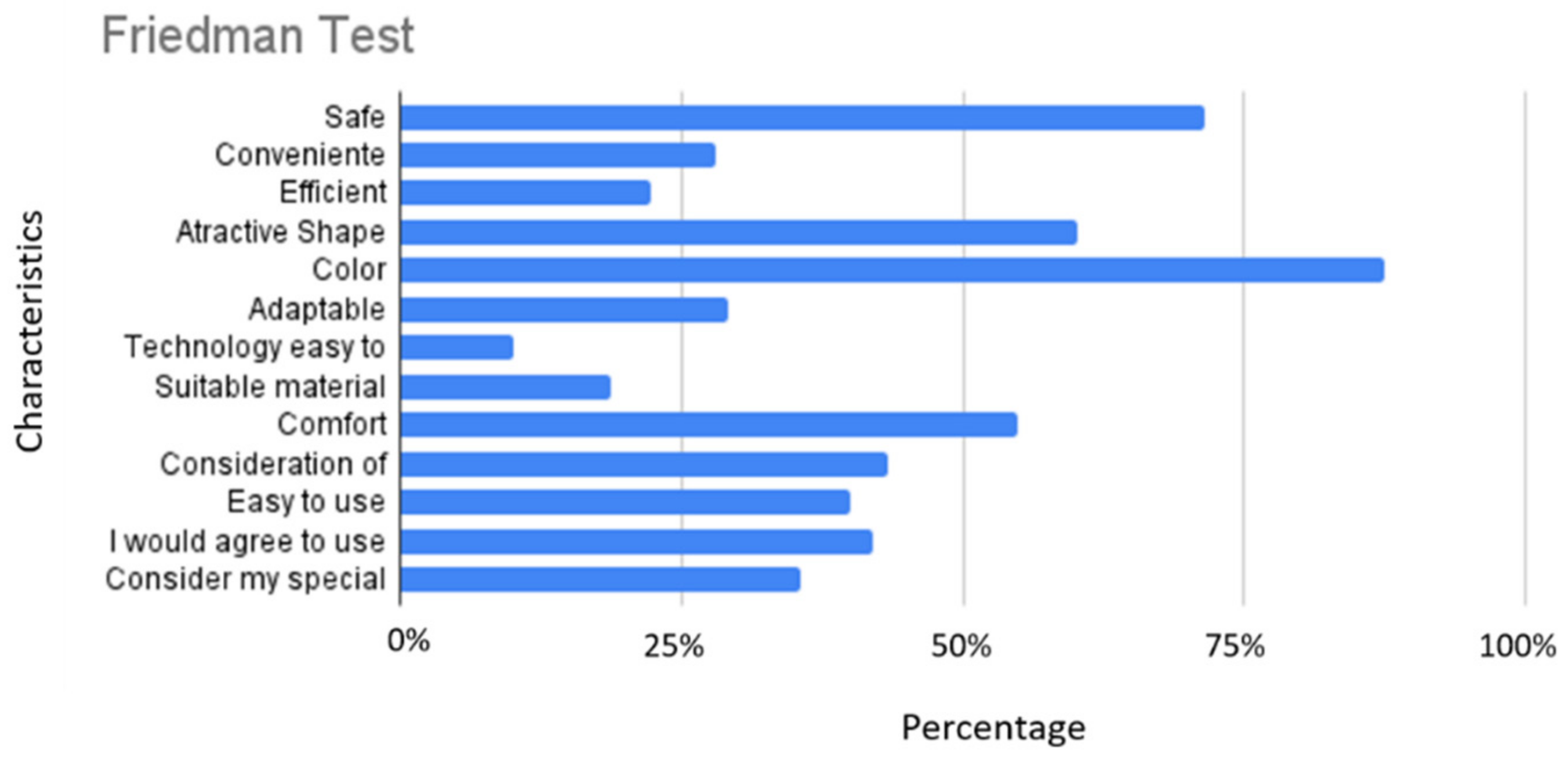
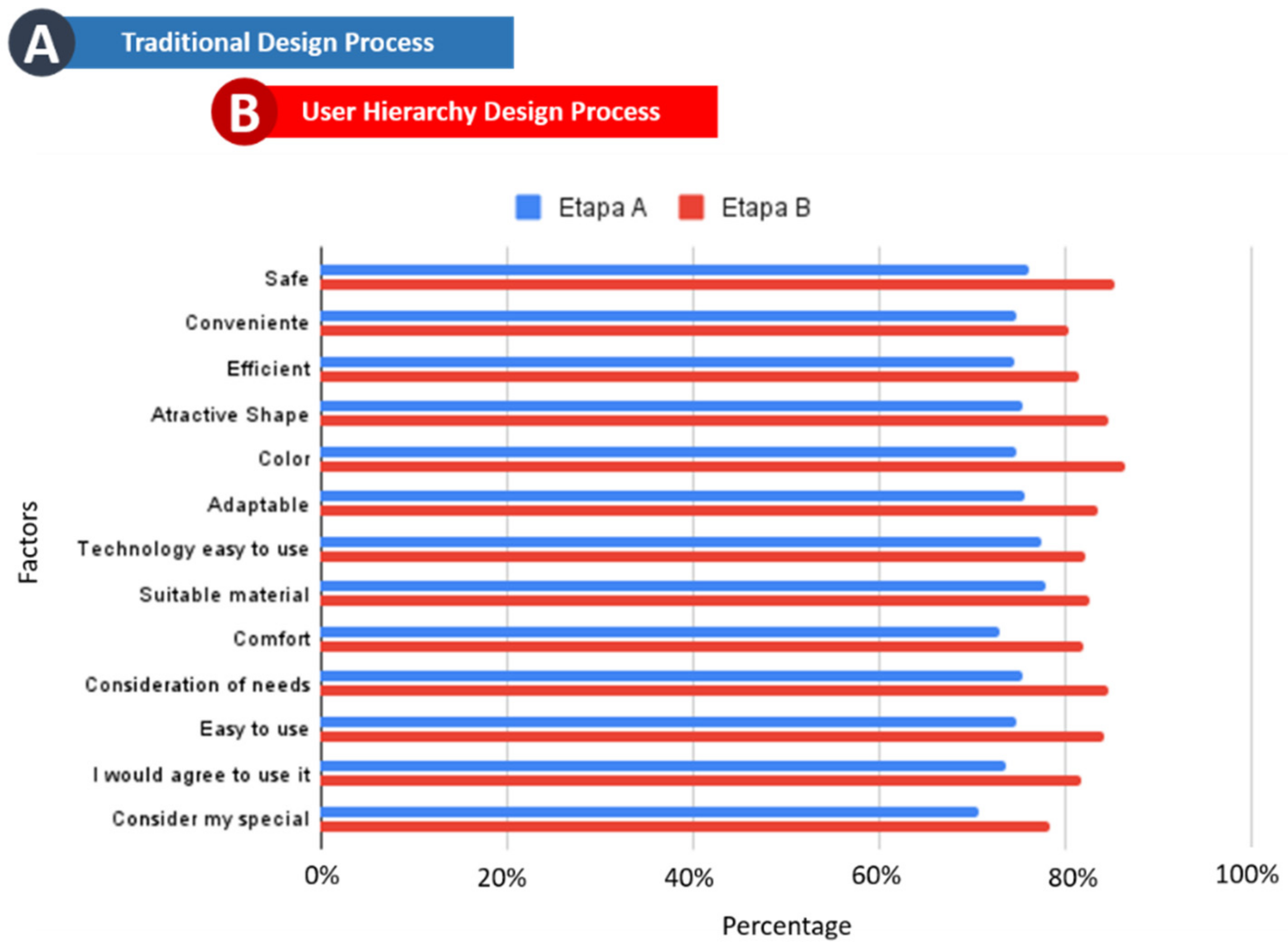

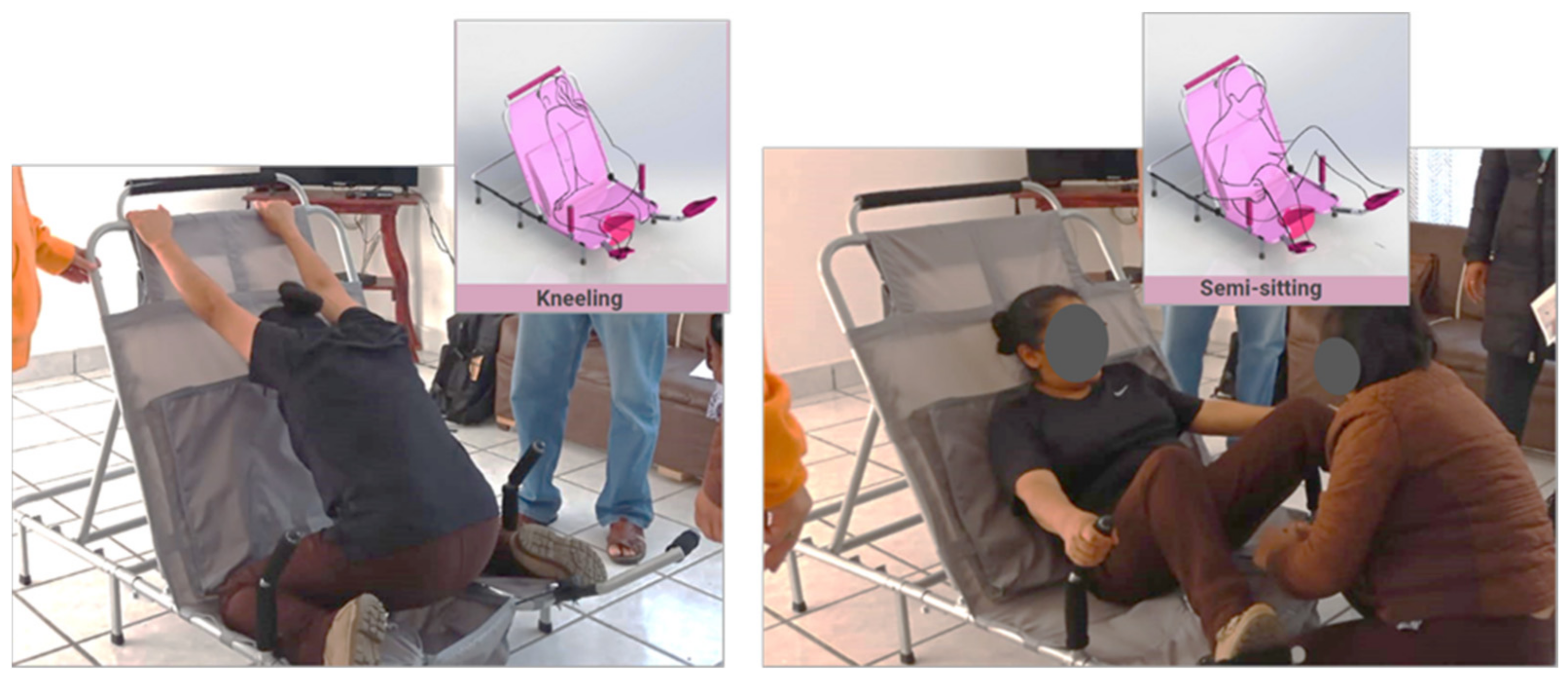
| Video Screen Shot and source | User | Hierarchy | Task Analysis |
|---|---|---|---|
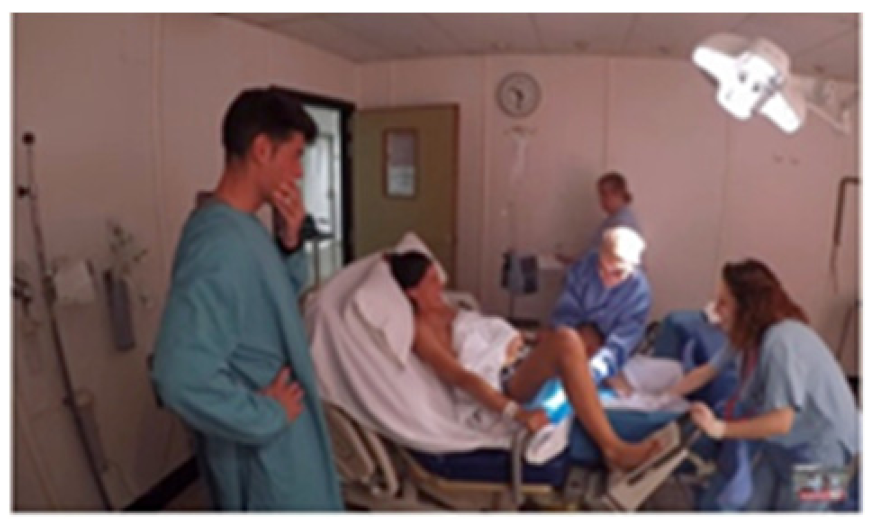 Video no. 25 | Mother | 2 | Leaning almost sitting, feet supported |
| Family | 5 | Accompaniment | |
| Specialist | 1 | Delivery, cleaning the baby | |
| Pediatrician | 4 | Delivery assistance, baby cleaning, mom cleaning | |
| Baby | 3 | Cleaning mother´s baby |
| Appearance in the Videos | ||
|---|---|---|
| Users | Percentage | Number of Videos |
| Specialist, Mother, Baby, Nurse, Family member | 100 | 32 |
| Pediatrician | 68.8 | 22 |
| Technician | 31.3 | 10 |
| 2nd Family member | 15.6 | 5 |
| 3nd Family member | 28.1 | 9 |
| 2nd Nurse | 6.2 | 2 |
| 4nd Family member | 3.1 | 1 |
| 2nd Doctor | 3.1 | 1 |
| 2nd Technician | 188 | 6 |
| 3nd Nurse | 9.4 | 3 |
| Stage A | Stage B | ||
|---|---|---|---|
| Model | Mean | Model | Mean |
| A1 | 51.12 | B1 | 51.51 |
| A2 | 41.97 | B2 | 55.79 |
| A3 | 55.21 | B3 | 54.48 |
| A4 | 49.67 | B4 | 50.99 |
| A5 | 40.67 | B5 | 56.45 |
| Characteristics | Stage A | Stage B | Friedman Test | ||
|---|---|---|---|---|---|
| Mean | s. d. | Mean | s. d. | ||
| Safe | 3.81 | 1.05 | 4.27 | 1.00 | 52.25 *** |
| Convenient | 3.74 | 1.09 | 4.02 | 1.05 | 22.37 *** |
| Efficient | 3.73 | 1.14 | 4.07 | 1.02 | 17.75 *** |
| Atractive shape | 3.77 | 1.14 | 4.23 | 1.02 | 48.13 *** |
| Color | 3.74 | 1.22 | 4.32 | 0.98 | 70.00 *** |
| Adaptable | 3.78 | 1.14 | 4.17 | 0.99 | 23.22 *** |
| Technology easy to use | 3.87 | 1.12 | 4.11 | 0.96 | 8.73 ** |
| Suitable material | 3.89 | 1.11 | 4.13 | 0.94 | 15.02 *** |
| Comfort | 3.65 | 1.21 | 4.27 | 1.11 | 43.84 *** |
| Consideration of needs | 3.77 | 1.26 | 4.1 | 0.98 | 34.59 *** |
| Easy to use | 3.74 | 1.19 | 4.23 | 0.99 | 32.00 *** |
| I would agree to use it | 3.68 | 1.23 | 4.09 | 1.1 | 33.53 *** |
| Consider my special needs | 3.54 | 1.24 | 3.92 | 1.15 | 28.45 *** |
Publisher’s Note: MDPI stays neutral with regard to jurisdictional claims in published maps and institutional affiliations. |
© 2021 by the authors. Licensee MDPI, Basel, Switzerland. This article is an open access article distributed under the terms and conditions of the Creative Commons Attribution (CC BY) license (https://creativecommons.org/licenses/by/4.0/).
Share and Cite
Cortes-Chavez, F.; Rossa-Sierra, A.; Gonzalez-Muñoz, E.L. Design Process for a Birthing Bed, Based on User Hierarchy: Promoting Improvement in User Satisfaction. Appl. Sci. 2021, 11, 9430. https://doi.org/10.3390/app11209430
Cortes-Chavez F, Rossa-Sierra A, Gonzalez-Muñoz EL. Design Process for a Birthing Bed, Based on User Hierarchy: Promoting Improvement in User Satisfaction. Applied Sciences. 2021; 11(20):9430. https://doi.org/10.3390/app11209430
Chicago/Turabian StyleCortes-Chavez, Fabiola, Alberto Rossa-Sierra, and Elvia Luz Gonzalez-Muñoz. 2021. "Design Process for a Birthing Bed, Based on User Hierarchy: Promoting Improvement in User Satisfaction" Applied Sciences 11, no. 20: 9430. https://doi.org/10.3390/app11209430
APA StyleCortes-Chavez, F., Rossa-Sierra, A., & Gonzalez-Muñoz, E. L. (2021). Design Process for a Birthing Bed, Based on User Hierarchy: Promoting Improvement in User Satisfaction. Applied Sciences, 11(20), 9430. https://doi.org/10.3390/app11209430








